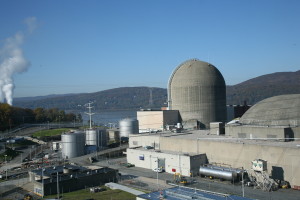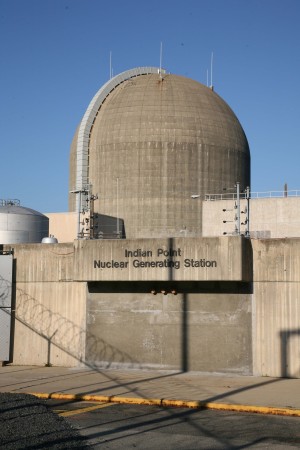The Nuclear Regulatory Commission issued an updated environmental impact statement of Indian Point and concluded the Buchanan power plant should be re-licensed when its two permits expire at the end of this year and next year.
A panel of three judges, serving as an independent entity within the NRC, is conducting hearings throughout the year to assess whether Indian Point should be re-licensed. This is in response to hundreds of contentions that environmental groups and New York state filed against Indian Point when it first applied for re-licensing in 2007.
On June 25, the NRC released a supplement to a 2010 environmental impact study that said that the impact of Indian Point”™s water cooling system, which essentially sucks in water from the Hudson River and uses it to cool the reactors”™ condensers, isn”™t significant enough to harm the river”™s ecological system.
However, nonprofit environmental group Riverkeeper disagrees, saying that the NRC”™s updated study shows more reasons to prevent the three-unit power plant from getting re-licensed.

“We looked at the list of 18 fish species the NRC studied, and at least four of the 18 will see a large impact,” said Phillip Musegaas, Riverkeeper”™s Hudson River program director. “Three of the four are species the NRC notes are in long-term decline. So the NRC themselves acknowledges there are at least four species that are ecologically significant and will face the highest level of impacts. How can the NRC then conclude that the overall impact of Indian Point isn”™t that great? We don”™t think their conclusion matches the data.”
Another issue New York state and environmental groups raised when Indian Point applied to renew its two licenses is the amount of thermal plume, or hot water discharge, that gets released back into the Hudson River. Entergy, which owns Indian Point, believes that the harm done to the river due to the heat discharge is unnoticeable, and the Department of Environmental Conservation supports them on this finding, said Jim Steets, director of communications at Entergy.
“Beyond a certain point, the water that is heated doesn”™t extend to the other side of the river in a significant way or into the travel areas for fish that migrate through,” Steets said.
Riverkeeper is concerned about the long-term effects of the hot water on the river.

“We want to know is that plume of water raising the temperature of the river and causing barriers in migration?” Musegaas said. “And if the fish have to avoid the hot water, will it change their migration patterns and impact the ecosystem as a whole?”
Environmental groups and New York state representatives have voiced concerns about how nuclear power plants don”™t store their used fuel, which are still radioactive but no longer useable, in safe places.
The potential impact of spent fuel storage hasn”™t been addressed in the hearings yet because of strict regulations about re-licensing that prevent the public from raising the issue, though that topic is expected to come up in the hearing process this fall, said NRC spokesman Neil Sheehan.
The judges on the panel have asked the NRC to conduct another environmental impact statement that specifically addresses whether power plants are safely storing their fuel waste.
“Fuel rods, once they are taken out of the reactors, have to be stored underwater. So power plants move them from reactors into spent fuel pool buildings,” Musegaas said. “Water shields the spent fuel from radiation and keeps the water cool. We”™re concerned that the pools are getting too full. And if you have an accident or if the spent fuel doesn”™t have water cooling it, it can heat up and catch on fire and release large amounts of radiation into the environment.”
Musegaas acknowledges that Indian Point is making the effort to transfer the used fuel to dry casks, which store the radioactive uranium packets in drum-shaped canisters that don”™t use electricity and remain sealed shut in individual containers.
“These dry casks are much smaller than the pools,” Musegaas said. “You divide up the spent fuel in casks instead of in one large spent fuel pool. Even if one of these casks leaks or is damaged it”™s one cask that leaks, not the entire fuel pool.”
The panel conducted a hearing last year and will conduct its second phase of hearings this fall. The process has been ongoing because of the volume of issues raised. Sixteen contentions were chosen out of hundreds for discussion at the hearing sessions. Of the 16, three were addressed. Nine are pending final reviews in the fourth quarter this year, and four more will be addressed in the fourth quarter next year.
If Indian Point receives approval to renew its licenses as expected, the nearly 40-year-old power plant will be able to operate for 20 more years.



















